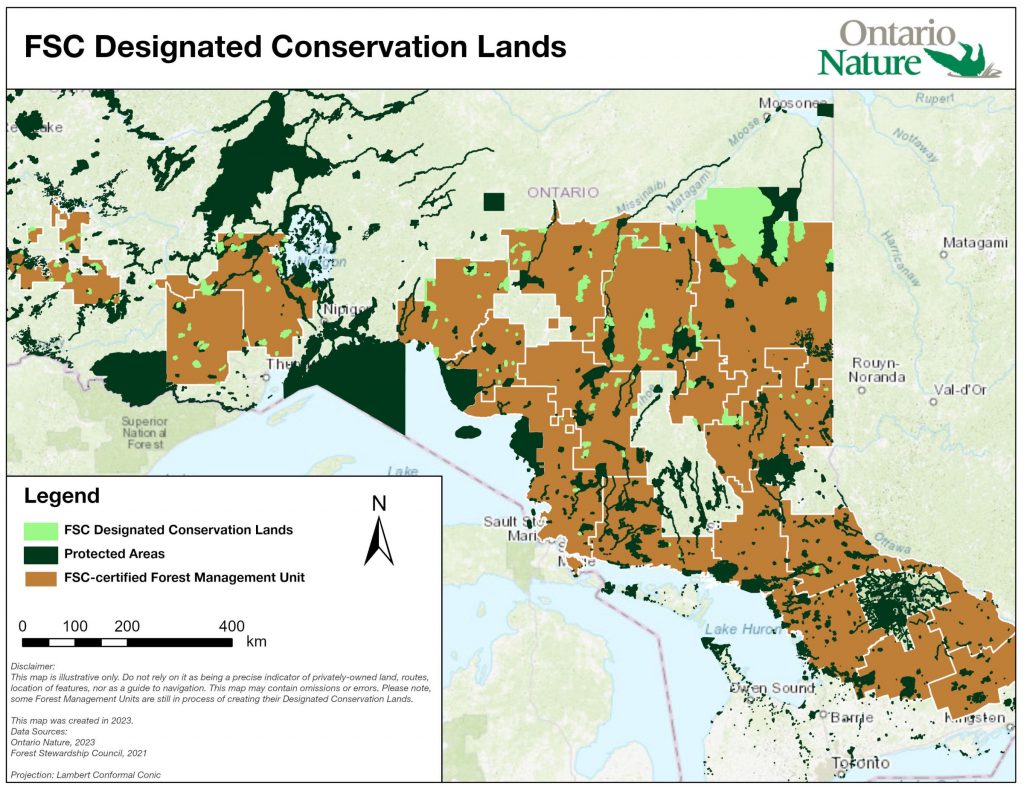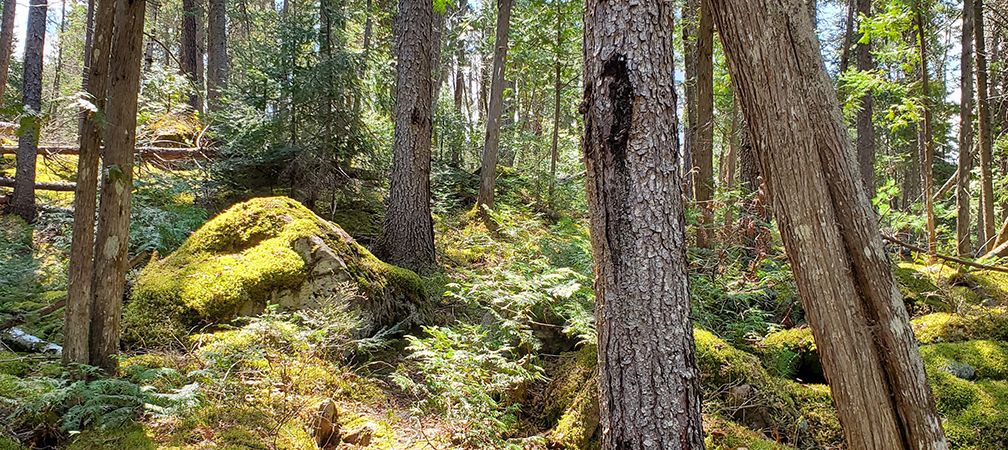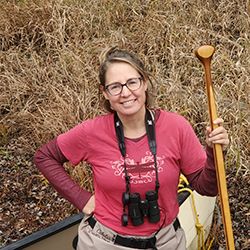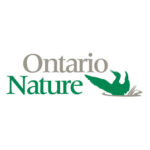Ontario Nature Blog
Receive email alerts about breaking conservation
and environmental news.
© Lora Denis
Boreal forest foliage © Corina Brdar
Ontario Nature has identified an opportunity for Ontario to contribute to the 30 by 30 biodiversity target by working with FSC-certified companies. Canada’s most respected sustainable forest certification is the Forest Stewardship Council (FSC). Currently, 19 of Ontario’s 39 forest management units on public land are FSC certified.
Many large businesses and organizations require their wood and paper products to be FSC-certified as an indication of their commitment to environmental values. Its principles emphasize biodiversity protection and prioritize Indigenous communities’ free, prior, and informed consent. Sustainable forest certification is voluntary and verifies a company’s responsible forest management practices while allowing them to gain market recognition for their sustainable practices.
As a charity that protects wild species and wild spaces, we work with Ontario forestry companies to help them obtain and retain FSC certification by holding them accountable to the conservation best practices outlined in the FSC principles.

To comply with FSC principles, forestry companies must maintain, conserve and restore ecosystem services and environmental values within the forest management unit they log in. This includes setting aside 10% of each forest management unit as “designated conservation lands” with the intent to get these lands permanently protected if they aren’t already.
Protection means they won’t be used for industrial purposes like forestry or mining but does not limit traditional use by Indigenous communities, or sustainable recreational activities by other land users.
Designated conservation lands are selected to protect areas that represent the natural ecosystems of the forest management unit. They can also include areas of high conservation value, such as critical habitats, rare species, ecological corridors and even areas with high natural carbon storage capacity. These lands are to be identified through meaningful engagement with Indigenous communities.
Our recent work with environmental economics experts from Green Analytics demonstrates that protecting these areas could be a win for the Government of Ontario, the economy, FSC certificate holders and all Ontarians.
The cost-benefit analysis of permanently protecting FSC-designated conservation lands indicates that protecting these lands would have no negative impacts on economic activity for forestry or rural northern economies. The economic benefits of protecting these sites vary from ensuring their continued role in carbon storage for perpetuity to solidifying the reputation of sustainable forestry in Ontario. The ecosystem services provided by these intact forests are estimated to be in the millions of dollars annually.
Use of public lands in Ontario by industry is prescribed through many different pieces of legislation and the policies related to them. One way to permanently protect designated conservation lands would be to use the same law used for provincial parks: the Provincial Parks and Conservation Reserves Act. But through our work with legal expert Ian Attridge, we’ve identified a range of options to achieve protection of these sites.
Creative solutions and approaches to land governance and management will be needed to meet the international commitment to protect 30% of the planet by 2030. We’re looking forward to talking to groups from all sectors about the legal and policy options for designated conservation lands.

Now that we’ve built a strong case to support the permanent protection of FSC designated conservation lands, we’re looking forward to working with partners like FSC Canada, forestry companies, and other environmental groups to broaden the conversation. We also look forward to learning what local Indigenous communities want for these lands. Permanently protecting over one million hectares of FSC-certified lands in central and northern Ontario is an opportunity for many partners to work together to contribute meaningfully to international, national and provincial biodiversity targets.
Check out our Story Map to see where Designated Conservation Lands are located.
This project is funded by the Government of Canada, ECO Canada, the Metcalf Foundation, the RBC Foundation, Canada Summer Jobs, and an anonymous donor.

Jenna Cardoso is the Protected Places Project Coordinator at Ontario Nature. Born and raised in southern Ontario, she feels most comfortable amongst the sugar maples, beech and white pines.

Corina has spent her career working in and for nature in Ontario and across Canada. She provides leadership for Ontario Nature’s conservation policy initiatives as the Conservation Policy and Planning Manager. Her other vocation is sharing the practice of nature journaling with others.

Proposed 413 Route, Old School Road with farm and escarpment view © Noah Cole
Thank you for your work in “Nature”!